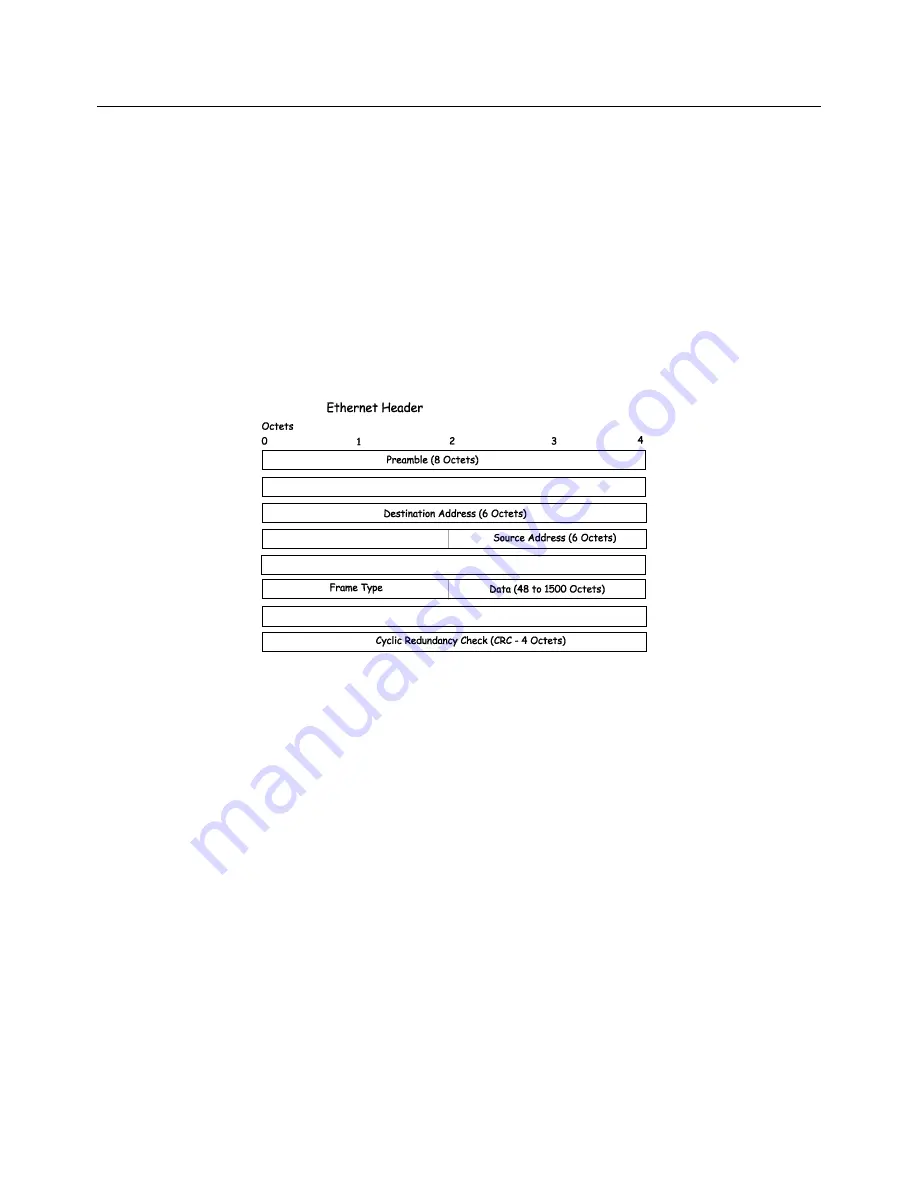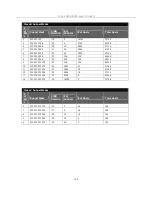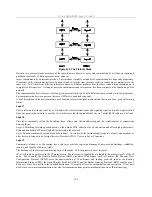
D-Link DES-3326S Layer 3 Switch
The flags and fragment offset are used to keep track of packets that must be divided among several smaller packets to cross
networks for which they are too large.
The Time-to-Live (TTL) is the number of gateways the packet is allowed to cross between the source and destination. This
number is decremented by one when the packet crosses a gateway and when the TTL reaches zero, the packet is dropped.
This helps reduce network traffic if a loop develops.
Ethernet
Every active Ethernet device has its own Ethernet address (commonly called the MAC address) assigned to it by the
manufacturer. Ethernet uses 48 bit addresses.
The Ethernet header is 14 octets that include the source and destination MAC address and a type code.
There is no relationship between the MAC address of a network node and its IP address. There must be a database of
Ethernet addresses and their corresponding IP addresses.
Different protocol families can be in use on the same network. The type code field allows each protocol family to have its
own entry.
A checksum is calculated and when the packet is received, the checksum is recalculated. If the two checksums are different,
the packet is dropped.
When a packet is received, the headers are removed. The Ethernet Network Interface Card (NIC) removes the Ethernet
header and checks the checksum. It then looks at the type code. If the type code is for IP, the packet is given to IP. IP then
removes the IP header and looks at its protocol field. If the protocol field is TCP, the packet is sent to TCP. TCP then looks
at the sequence number and uses this number and other data from the headers to reassemble the data into the original file.
197
















































